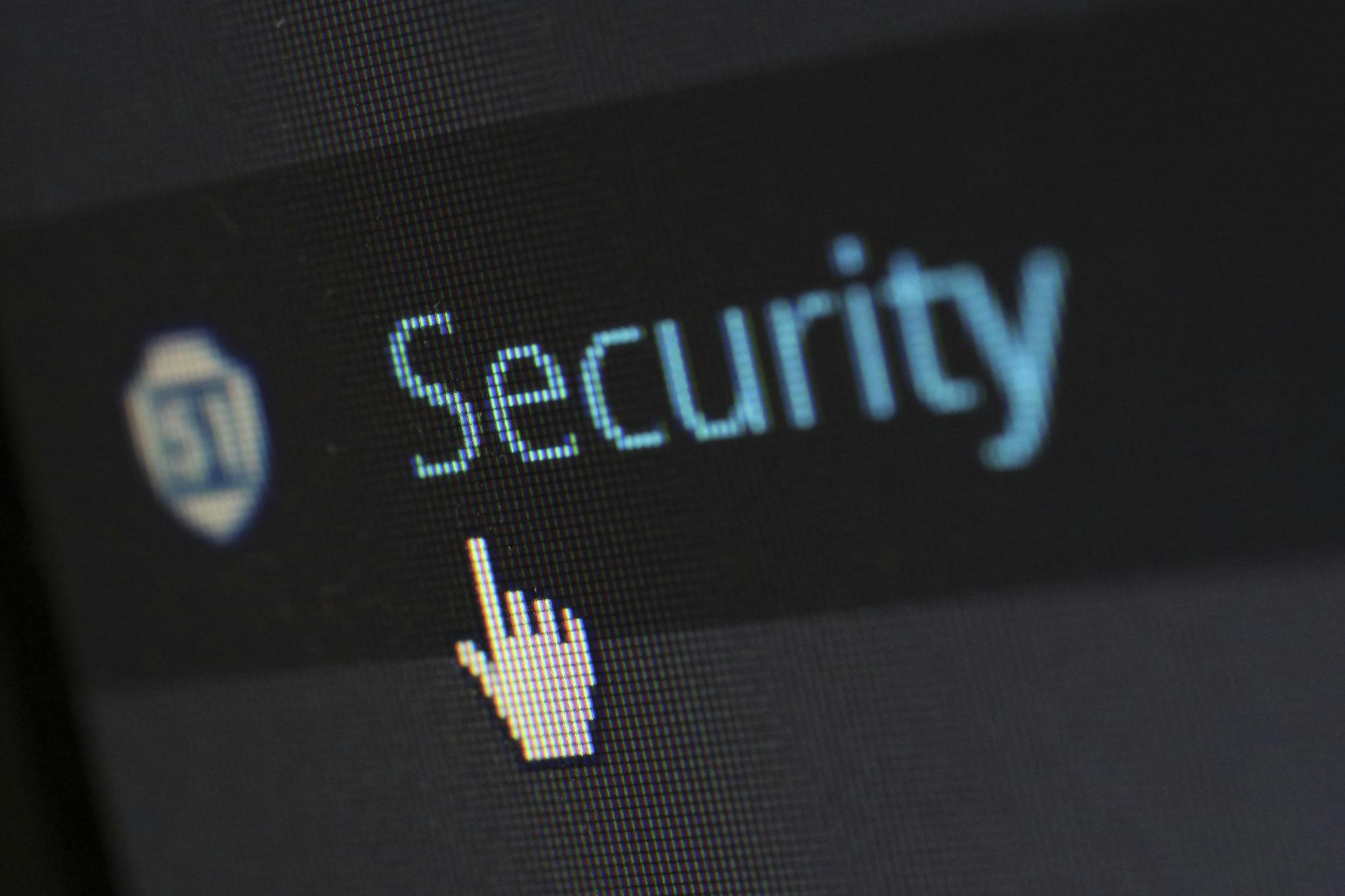Photo by Nahel Abdul Hadi on Unsplash
In today's digital landscape, the need to safeguard your online accounts with strong passwords and two-factor authentication has never been more critical. With cyber threats on the rise, it is essential to implement robust security measures to protect sensitive personal information from falling into the wrong hands.
Hackers and malicious actors are constantly evolving their techniques to gain unauthorized access to accounts, emphasizing the importance of fortifying your online security. By utilizing strong, unique passwords and two-factor authentication, you add an extra layer of defense that significantly reduces the risk of unauthorized access.
According to recent studies, accounts protected by two-factor authentication are much less likely to be compromised compared to those without this added security measure. By taking proactive steps to secure your accounts, you not only protect your personal data but also contribute to a safer online environment for all users.
As we delve deeper into the realm of cybersecurity, understanding the significance of implementing strong passwords and two-factor authentication becomes paramount. Stay tuned to explore practical tips and best practices for enhancing your online security and fortifying your digital presence against emerging threats.
Understanding the Importance of Strong Passwords
In today's digital age, the importance of strong passwords cannot be overstated. Securing your online accounts with robust passwords is a fundamental step in safeguarding your sensitive information from malicious actors. Let's delve into the characteristics of a secure password, strategies for creating complex yet memorable passwords, and the benefits of utilizing password managers for enhanced security.
Characteristics of a Secure Password
A secure password is the first line of defense against cyber threats. It should be long to increase complexity, include a mix of uppercase and lowercase letters, numbers, and special characters, and avoid common phrases or easily guessable information like birthdates or pet names. For example, a strong password could be a phrase like "Pineapple$Sunset#2023" which combines words, special characters, and numbers strategically.
Creating Complex Yet Memorable Passwords
Crafting a strong yet memorable password is essential to strike a balance between security and convenience. One effective method is passphrase construction, where you create a sentence that is meaningful to you but difficult for others to guess. Additionally, consider using special characters such as !, @, or # to enhance complexity while making it easier to remember. Avoid using personal information that can be easily obtained or guessed.
Utilizing Password Managers for Enhanced Security
Password managers offer a convenient solution for managing and securing multiple passwords. These tools generate complex passwords, store them securely, and autofill login credentials for various websites. By using a password manager, you can maintain unique passwords for each account, reducing the risk of a single password compromise leading to multiple account breaches. Popular password managers include LastPass, Dashlane, and 1Password.
Photo by Pixabay
Implementing Two-Factor Authentication (2FA)
Two-factor authentication (2FA) adds an extra layer of security to your online accounts beyond just a password. Let's delve into the realm of 2FA and how you can implement it effectively.
Types of Two-Factor Authentication Methods
When it comes to securing your accounts with 2FA, you have various methods at your disposal. These methods include SMS codes, authenticator apps, biometric verification, security keys, and more. Each method has its strengths and weaknesses. SMS codes are easy to use but can be vulnerable to SIM swapping attacks. Authenticator apps provide a more secure option, while biometric verification offers convenience along with security. Understanding the pros and cons of each method can help you choose the most effective one for your accounts.
Here are some resources to explore more about the different types of two-factor authentication methods:
- Types of two-factor authentication: pros and cons: This article discusses the effectiveness of various 2FA mechanisms like one-time codes.
- The Three Types of Multi-Factor Authentication (MFA): Learn about the different types of MFA including "Something You Know" and "Something You Have."
- Multi-Factor Authentication (MFA/2FA) Methods: Dive into the details of the 8 most common authentication methods, such as Push Notification and OTP passcodes.
Setting Up Two-Factor Authentication for Popular Platforms
Enabling 2FA on popular platforms is crucial to enhance your online security. Below are step-by-step instructions to set up 2FA on commonly used online services like social media, email accounts, and financial platforms. Taking these extra steps can significantly reduce the risk of unauthorized access to your accounts.
Social Media Platforms:
- Facebook: Go to Settings > Security and Login > Two-Factor Authentication.
- Twitter: Access Account > Settings and privacy > Security and account access.
- Instagram: Navigate to Settings > Security > Two-Factor Authentication.
Email Accounts:
- Gmail: Visit your Google Account > Security > 2-Step Verification.
- Outlook: Go to Security basics > More security options > Set up two-step verification.
- Yahoo: Under Account Security, enable two-step verification.
Financial Platforms:
- PayPal: Access Security > Two-factor authentication > Turn on 2FA.
- Bank Apps: Check with your bank for specific instructions on enabling 2FA for your account.
Remember, enabling 2FA adds an extra layer of protection, safeguarding your sensitive information from unauthorized access.
 Photo by Pixabay
Photo by Pixabay
Best Practices for Comprehensive Account Security
In the digital age, safeguarding your online accounts is paramount. By following best practices for comprehensive account security, you can significantly reduce the risk of unauthorized access and protect your sensitive information. Let's delve into effective strategies that help fortify your online defenses.
Regularly Updating Passwords and Security Settings
Frequently updating passwords and reviewing security settings is a fundamental step in enhancing account security. Changing your passwords periodically, ideally every 3-6 months, can thwart potential security breaches. Ensure that your passwords are robust, incorporating a mix of letters, numbers, and special characters. Consider utilizing a password manager to securely store and manage your login credentials across various platforms. Implementing two-factor authentication adds an extra layer of protection to your accounts, requiring not only a password but also a verification code.
Remaining Vigilant Against Phishing and Social Engineering Attacks
Phishing and social engineering attacks are prevalent tactics used by cybercriminals to trick individuals into revealing confidential information. Be cautious of unsolicited emails, messages, or calls requesting sensitive data or urging urgent action. Verify the authenticity of the source before sharing any personal details or clicking on unfamiliar links. Educate yourself and your family members about common phishing strategies like email impersonation and deceptive websites. Stay alert and report any suspicious activity to the respective online service provider.
By staying proactive and adhering to these proactive measures, you can bolster your account security and enjoy a safer online experience.
 Photo by cottonbro studio
Photo by cottonbro studio
Conclusion
In conclusion, securing your online accounts with strong passwords and two-factor authentication is paramount in today's digital landscape. Strong passwords act as the first line of defense against cyber threats, while two-factor authentication provides an additional layer of security by requiring a secondary form of verification. By implementing these security measures proactively, users can significantly enhance the protection of their digital identities and sensitive information. Remember, a small investment in security measures today can prevent significant losses and breaches in the future. Stay safe online by prioritizing strong passwords and two-factor authentication for all your accounts.

















0 Comments